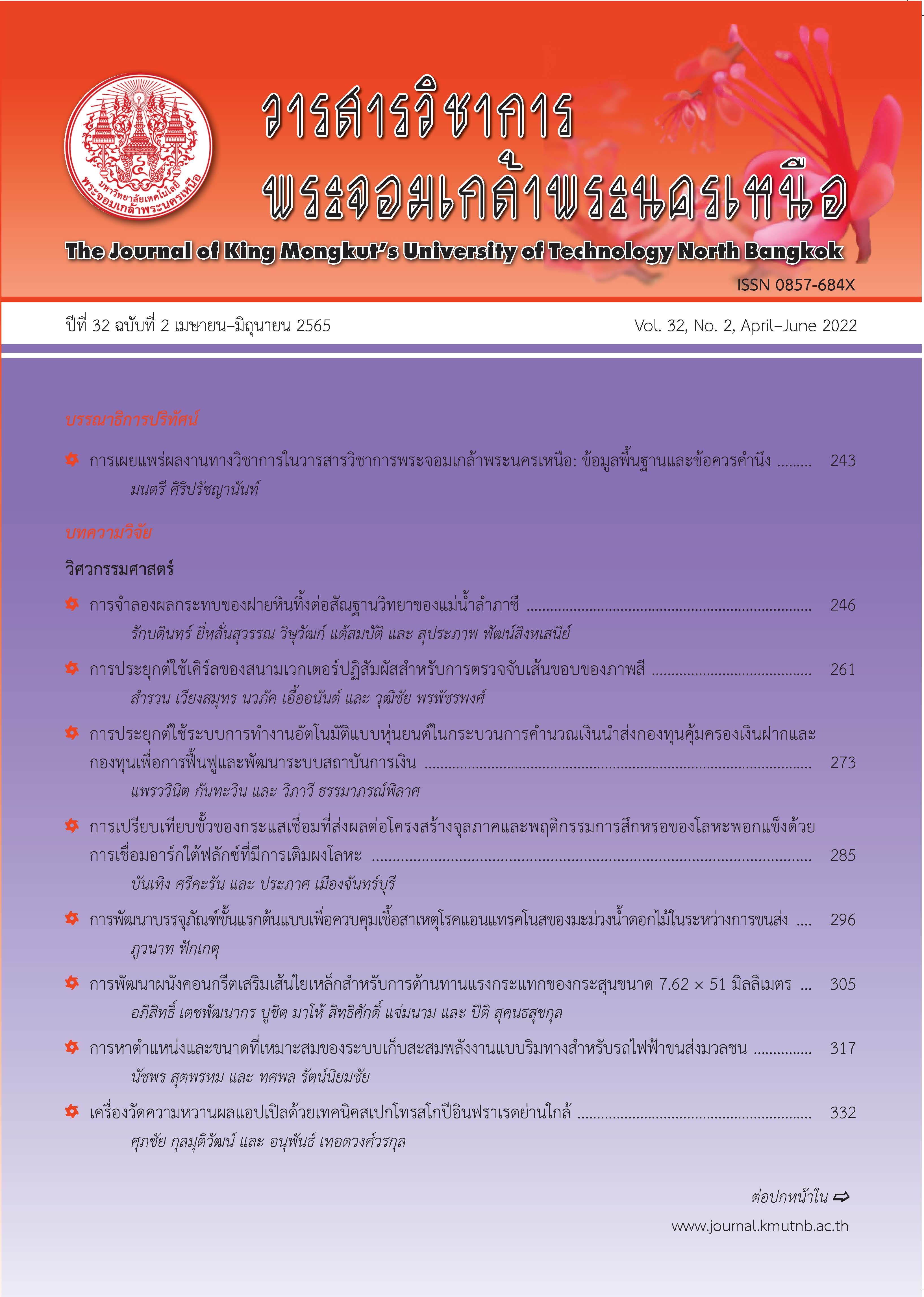การวิเคราะห์ค่าสุดขีด: ภายใต้กระบวนการไม่คงที่
Main Article Content
บทคัดย่อ
ค่าสุดขีด (Extreme value) หมายถึง เซตของข้อมูลที่เป็นค่าสูงสุด หรือ ค่าต่ำสุด ที่อยู่ในเหตุการณ์สุดขีด (Extreme event) ที่เกิดขึ้นในธรรมชาติ ดังนั้นการหาโอกาสที่จะเกิดเหตุการณ์สุดขีดในอดีตว่าจะเกิดขึ้นได้อีกในอนาคตหรือไม่นั้น คือการที่นักวิเคราะห์พยายามสร้างแบบจำลองที่ดีที่สุดสำหรับค่าสุดขีดที่ศึกษา ซึ่งนักวิเคราะห์ส่วนใหญ่มักจะตัดข้อมูลดังกล่าวทิ้งไปไม่นำมาพิจารณาในการสร้างแบบจำลองเนื่องจากการวิเคราะห์ข้อมูลเหล่านี้มีความซับซ้อนและยุ่งยาก แต่ในความเป็นจริงถ้านักวิเคราะห์ต้องการทราบความน่าจะเป็นหรือโอกาสของเหตุการณ์ที่มีค่าสูงสุดหรือต่ำสุดซึ่งอยู่ในส่วนปลายหางที่มีจำนวนข้อมูลน้อยมาก ซึ่งการวิเคราะห์ข้อมูลที่มีคุณสมบัติเป็นค่าสุดขีด เงื่อนไขหนึ่งที่จำเป็นต้องตรวจสอบก่อนจะนำข้อมูลไปวิเคราะห์ต่อเพื่อหาค่าพารามิเตอร์ของแบบจำลองคือ ข้อมูลที่นำมาวิเคราะห์อยู่ภายใต้กระบวนการแบบใด ระหว่างกระบวนการคงที่ (Stationary Process) หรือกระบวนการไม่คงที่ (Non-stationary Process) เนื่องจากกระบวนการทั้งสองมีขั้นตอนการวิเคราะห์และวิธีการเลือกตัวแบบที่เหมาะสมที่แตกต่างกัน ดังนั้นถ้าหากไม่มีขั้นตอนการพิจารณาลักษณะของข้อมูล อาจจะทำให้ผลประมาณค่าพารามิเตอร์ของแบบจำลองผิดพลาด และส่งผลถึงการนำไปใช้ต่อที่ไม่เกิดประโยชน์และอาจจะส่งผลร้ายแรง โดยเฉพาะการวิเคราะห์ข้อมูลในด้านที่ต้องใช้ความแม่นยำของแบบจำลองเป็นอย่างยิ่ง
Article Details

อนุญาตภายใต้เงื่อนไข Creative Commons Attribution-NonCommercial-NoDerivatives 4.0 International License.
บทความที่ลงตีพิมพ์เป็นข้อคิดเห็นของผู้เขียนเท่านั้น
ผู้เขียนจะต้องเป็นผู้รับผิดชอบต่อผลทางกฎหมายใดๆ ที่อาจเกิดขึ้นจากบทความนั้น
เอกสารอ้างอิง
S. Kotz and S. Nadaraja, Extreme Value Distributions: Theory and Applications. Singapore: Imperial College Press, 2000.
J. Beirlant, Y. Goegebeur, J. Segers, and J. L. Teugels, Statistics of Extremes: Theory and Applications. New York: John Wiley & Sons, 2004.
S. Coles, An Introduction to Statistical Modeling of Extreme Values. London: Springer-Varlag, 2001.
S. Coles and S. Nadaraja, An Introduction to Statistical Modeling of Extreme Values. Great Britain: Springer-Varlag London Limited, 2001.
P. Embrecht, C. Kluppelberg, and T. Mikosch, Modeling Extremal Events for Insurance and Finance. Berlin: Springer Verlag, 1997.
E. J. Gumbel, Statistics of Extremes. New York: Columbia University Press, 1958.
B. Finkenstadt and H. Rootzen, Extreme Values in Finance, Telecommunications, and the Environment. London: Chapman and Hall/ CRC Press, 2004.
P. Amphanthong and P. Busababodhin, “Modeling and prediction of exchange rate and billion gold price of Thailand,” International Journal of Statistics and Economics, vol. 16, no. 3, pp. 81– 92, 2015 (in Thai).
P. Busababodhin, “Modeling on maximum rainfall and temperature based on extreme value copula analysis,” in Proceeding of 10th Conference on Extreme Value Analysis (EVA2017), 2017, pp. 14.
R. D. Reiss and M. Thomas, Statistical Analysis of Extremes Value with Applications to Insurance, Finance, Hydrology and Other Fields. Germany: Springer, 2007.
T. An and M. D. Pandey, “A comparison of methods of extreme wind speed estimation,” Technical Note Journal of Wind Engineering and Industrial Aerodynamics, vol. 93, pp. 535– 545, 2005.
A.F. Jenkinson, “The frequency distribution of the annual maximum (or minimum) values of meteorological elements,” Quarterly Journal of the Royal Meteorological Society, vol. 81, pp. 158–171, 1955.
J. Galambos, The Asymptotic Theory of Extreme Order Statistics. New York: Wiley, 1978.
P. Busababodhin and A. Keawmun, “Extreme values statistics,” The Journal of KMUTNB, vol. 25, no. 2, pp. 55–65, 2015 (in Thai).
Meteorological Department of Thailand. (2020, May). Weather forecast. Thai Meteorological Department. Bangkok, Thailand [Online]. (in Thai). Available: http://www.tmd.go.th

